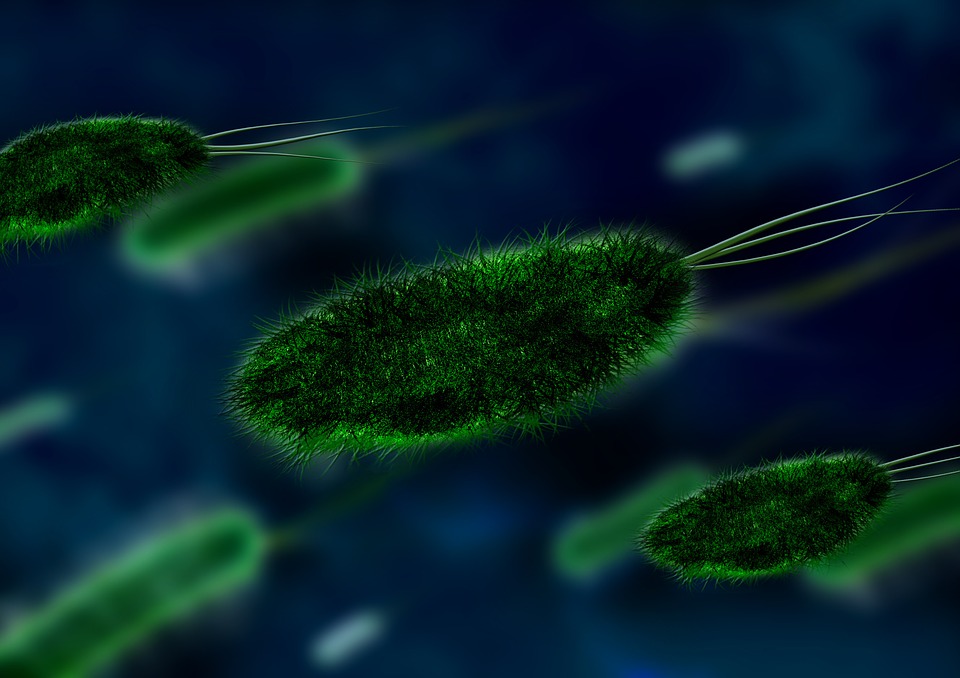Bacteria can form living materials with liquid crystals, says a new research
May 16, 2017 | Tuesday | News
The findings suggest novel approaches for trapping and transport of bacteria and synthetic swimmers in anisotropic liquids and extend a scope of tools to control and manipulate microscopic objects in active matter.
A team of researchers is trying to better understand how liquid crystals, combined with bacteria, form living materials and how the two interact to organize and move.
"One of the ideas we came up with was materials that live," said Igor S. Aronson, holder of the Huck Chair and Professor of Biomedical Engineering, Chemistry and Mathematics. Living matter, active matter may be self-healing and shape-changing and will convert energy to mechanical motion."
The living material Aronson is exploring using predictive computational models and experiments is composed of a bacterium — Bacillus subtilis — that can move quickly using its long flagella and a nematic liquid crystal — disodium cromoglycate. Liquid crystals as materials sit somewhere between a liquid and a solid. In this case, the molecules in disodium cromoglycate line up in long parallel rows, but are not fixed in place. Capable of moving, they remain oriented in only one direction unless disturbed.
According to Aronson, this type of liquid crystal closely resembles a straight-plowed field with the ridges the molecules and the furrows the areas in between.
Previously the researchers found that these tiny bacteria in a liquid crystal material can push cargo — tiny particles — through the channels in a liquid crystal and move at four times their body length when in small concentrations, but conservatively, at 20 times their body length when in large numbers.
"An emergent property of the combination of a liquid crystal and bacteria is that at about a 0.1 percent-by-volume bacterial concentration we start to see a collective response from the bacteria," said Aronson.
This type of living material is not simply a combination of two components, but the two parts create something with unusual optical, physical or electrical properties. However, there is no direct connection between the bacteria and the liquid.
The researchers' computer models showed collective behavior in their system similar to that seen in actual liquid crystal/bacteria combinations.
The predictive computational models for this liquid-crystal bacteria system show a change from straight parallel channels when only a small bacteria population exists, to a more complex, organized, active configuration when bacteria populations are higher. While the patterns are always changing, they tend to form pointer defects — arrow shapes — that serve as traps and concentrate bacteria in an area, and triangle defects that direct bacteria away from the area. Increased bacterial concentration increases the velocity of the bacteria and configurations in areas with higher bacteria population change more rapidly than in areas with fewer bacteria.
Aronson and his team looked at actual liquid-crystal living materials in a slightly different way than in the past. They wanted the liquid-crystal thin film to be independent, not touching any surface, so they used a device that created the film — in a way similar to that used to create large soap bubbles — and suspended it away from surface contact. This approach showed patterns of defects in the material's structure.
Experiments with thin films of liquid crystals and bacteria produced the same results as the computational models, according to the researchers.
Another effect the researchers found was that when oxygen was removed from the system, the action of the living material stopped. Bacillus subtilis is usually found in places with oxygen, but can survive in environments devoid of oxygen. The bacteria in the living material did not die, they simply stopped moving until oxygen was once again present.
The researchers reported that their "findings suggest novel approaches for trapping and transport of bacteria and synthetic swimmers in anisotropic liquids and extend a scope of tools to control and manipulate microscopic objects in active matter."
Because some biological substances like mucus and cell membranes are sometimes liquid crystals, this research may produce knowledge of how these biological substances interact with bacteria and might provide insight on diseases due to bacterial penetration in mucus.
Also working on this project were Mikhail M. Genkin, doctoral student in engineering science and applied mathematics, Northwestern University; Andrey Sokolov, materials scientist, Argonne National Laboratory; and Oleg D. Lavrentovich, Trustees Research Professor, Liquid Crystal Institute and Chemical Physics Interdisciplinary Program, Kent State University.
The U.S. Department of Energy supported this work.
Source: Penn State News










